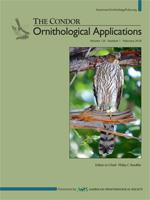Management of reed beds primarily includes controlling water levels and removing vegetation by mowing, burning, or grazing. Although recent studies have demonstrated increased diversity and abundance of wetland specialists after reed bed management, documenting demographic benefits to individual species would add additional support to the advantages of appropriate management. Here, we explore the effects of reed management on the philopatry of Great Reed Warblers (Acrocephalus arundinaceus) over 7 yr. Reed beds were managed in the winter by occasional burning at mining ponds and large canals, infrequent burning in marshes, and frequent mowing of small canals. Based on resightings and recaptures of 1,243 adult and 1,428 nestlings individually marked at 57 sites in 6 different reed habitats, we built Cormack-Jolly-Seber models to estimate the apparent annual survival and encounter probabilities of birds banded as nestlings or as adults. Apparent survival varied in time for both age groups and both sexes, suggesting annual fluctuations in survival, whereas encounter probability remained constant across years. The encounter probability of birds banded as juveniles was higher in reed beds with shallower water. The encounter probability of birds banded as adults was higher in reed beds with deeper water for females, and strongly increased with variation in reed management and less strongly with variation in water depth for males. We also found that the few returning juveniles displayed strong philopatry to the reed habitat occupied in their first breeding season. Our study provides evidence that reed management influences the return rates of juveniles and adult males and females in different ways. Spatially variable reed management by mowing or burning should be applied and water of varying depths should be maintained to maximize return rates of Great Reed Warblers.
How to translate text using browser tools
20 December 2017
Reed management influences philopatry to reed habitats in the Great Reed Warbler (Acrocephalus arundinaceus)
Thomas Oliver Mérő,
Antun Žuljević,
Katalin Varga,
Szabolcs Lengyel
ACCESS THE FULL ARTICLE

The Condor
Vol. 120 • No. 1
February 2018
Vol. 120 • No. 1
February 2018
ecosystem management
habitat use
indicator species
nest site selection
Phragmites australis
reed management
site fidelity




